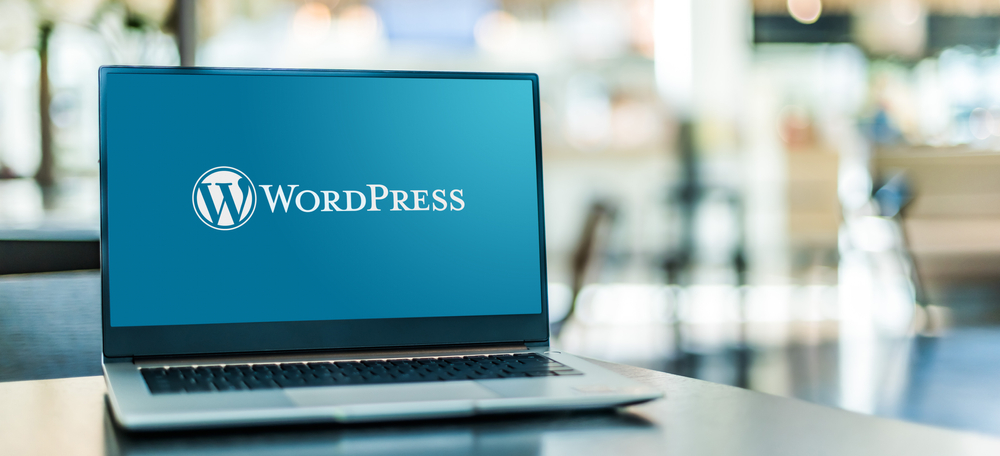
WordPress has become the go-to platform for millions of websites around the world. With its user-friendly interface and vast customization options, it's no wonder why so many choose WordPress to power their online presence. Whether you are a seasoned WordPress user or just starting out, this article will provide you with essential tips for mastering WordPress (the blogging platform) customization and maintenance.
1. Choose the Right ThemeOne of the most important aspects of customizing your WordPress (or WP) site is choosing the right theme. A theme defines the overall look and feel of your website, so it's crucial to select one that aligns with your brand and objectives. When searching for a theme, consider factors such as responsiveness, SEO friendliness, and customization options. There are countless free and premium themes available, so take your time to find the perfect fit.
2. Customize with Plugins
Plugins are the backbone of any successful WordPress website. They extend the functionality of your site, allowing you to add features and tailor it to your specific needs. Whether you want to enhance SEO, create a contact form, or incorporate social sharing buttons, there is a plugin for every requirement. However, don't go overboard with plugins as too many could slow down your site. Choose reliable and well-maintained plugins from reputable sources.
3. Optimize for Performance
Website speed is a crucial factor for user experience and search engine rankings. Slow-loading sites can discourage visitors and negatively impact your SEO efforts. To optimize your WordPress (WP) site for performance, start by using a lightweight theme and minimal plugins. Consider using a caching plugin to store static versions of your pages and speed up loading times. Additionally, optimize your images by compressing them without compromising on quality. Regularly monitoring and optimizing your site's performance will ensure a smooth user experience.
4. Regularly Update WordPress (the platform for bloggers) Core and Plugins
WordPress frequently releases updates to improve security, fix bugs, and introduce new features. It's crucial to keep your WordPress core and plugins up to date to ensure the security and stability of your site. Regularly check for updates and install them in a staging environment before updating your live site. Always backup your site before performing any updates to mitigate potential risks.
5. Secure Your WordPress Site
WordPress's popularity also attracts hackers and malicious actors. Therefore, it's vital to take necessary steps to secure your WordPress site from potential threats. Start by using strong passwords and enabling two-factor authentication to prevent unauthorized access. Regularly monitor your site for suspicious activity and consider installing a security plugin to provide an extra layer of protection. Additionally, keep your WordPress core, themes, and plugins up to date as mentioned in the previous tip.
6. SEO Optimization
Optimizing your WordPress site for search engines is essential for driving organic traffic. Fortunately, WordPress offers many SEO-friendly features and plugins that can help improve your site's search engine rankings. Install an SEO plugin like Yoast SEO or All in One SEO Pack to optimize your meta titles, descriptions, and XML sitemaps. Create unique and engaging content, use relevant keywords, and interlink your pages for better SEO performance.
7. Back up Your Website
Backing up your WordPress website regularly is crucial to protect yourself against potential data loss. Accidental deletions, hacking attempts, or server failures can lead to the loss of your valuable content. Fortunately, there are numerous backup plugins available that make this process simple. Schedule automatic backups to a secure location such as a cloud storage provider or an external drive. In case of any emergencies, you can restore your site to a previous version with minimal disruption.
Frequently Asked Questions:
1. How do I install a new theme in WordPress?To install a new theme in WordPress, navigate to the "Appearance" section in the dashboard and click on "Themes." From here, you can choose to either search for a theme in the WordPress directory or upload a theme in ZIP format. Once you find the desired theme, click on "Install" and then "Activate" to make it active on your website.
2. How many plugins should I use on my WordPress site?
There is no strict limit on the number of plugins you can use on your WordPress site. However, it's recommended to use only the essential plugins to avoid performance issues. Aim for quality over quantity and regularly review your plugin list to remove any unnecessary or outdated ones.
3. Can I change my WordPress theme without losing content?
Yes, changing a WordPress theme typically does not affect your content such as posts, pages, and media. However, it's always a good practice to create a backup of your website before making any major changes, including theme installations or updates.
4. What happens if I don't update WordPress and plugins?
If you don't update WordPress and plugins, your site may become vulnerable to security breaches and bugs. Outdated versions can expose your website to hackers who exploit known vulnerabilities. Moreover, newer versions often come with bug fixes and performance improvements that can enhance your site's functionality.
5. How often should I back up my WordPress site?
The frequency of backing up your WordPress site depends on how frequently you publish new content or make significant changes. It's generally recommended to back up your site at least once a week. However, if you have a high-traffic site with frequent updates, consider backing up more frequently, such as daily or every few days.
In conclusion, mastering WordPress customization and maintenance involves careful theme selection, plugin management, performance optimization, regular updates, security measures, SEO optimization, and regular backups. By implementing these essential tips, you can ensure a seamless and successful WordPress experience.
Other useful resources
- https://www.wordpress24plus.com/wordpress-tools-directory/wordpress-themes/
- https://en.wikipedia.org/wiki/Blog
- https://www.wordpress24plus.com/wordpress-tools-directory/wordpress-plugins/